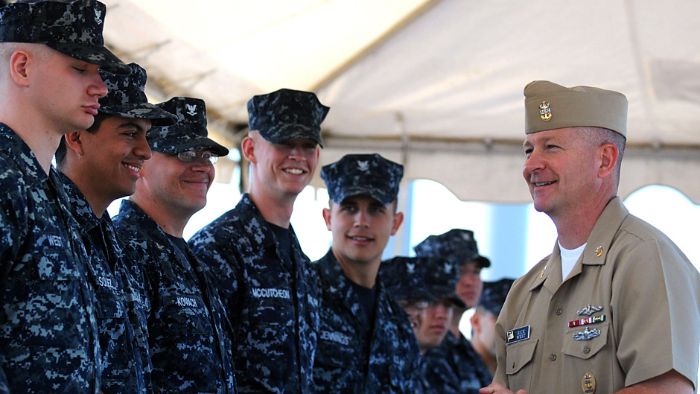Identifying everything from roles to rate and rank Uniforms & Insignias
How can you tell if a Sailor is Enlisted or an Officer? How can you recognize where they rank? What’s an easy way to find out what various Sailors do? The uniform and elements of the uniform provide answers to these and other questions. Start with an overview of uniforms and the significance of military insignias – including the basics of Navy rate and rank.
Enlisted and Officer Designations
In the Navy and Navy Reserve, members are classified as either Enlisted Sailors or Commissioned Officers (a category that includes the Chief Warrant Officers and Limited Duty Officers). This basic designation reflects upon a member's background and/or experience and suggests general roles and responsibilities.
Among other things, the uniform will tell you whether a member is Enlisted or an Officer.
Knowing Your Uniforms
Reservists and members of the Navy wear the same basic types of uniforms. These include three basic categories:
- Dress Uniforms – Designed for more formal occasions, there are service dress, full dress and dinner dress uniforms in this category, ranging from least formal to most formal.
- Service Uniforms – Designed for daily use, these uniforms are intended for wear in office environments, in public and in watch situations.
- Working Uniforms – Also designed for daily use, these uniforms are intended for wear in non-office working environments at sea and ashore.
Variations of each of these basic uniform types exist and typically differ between Enlisted Sailors and Commissioned Officers.
Knowing Your Military Insignias
The military insignias worn on Navy uniforms clearly define a member’s pay grade, place in the chain of command, and job or area of expertise. When referring to Enlisted Sailors, the term used is rate. When referring to Officers (including Chief Warrant Officers and Limited Duty Officers), the term used is rank .
It is important to note that the same Navy rate and Navy rank information that applies to those on Active Duty also applies to those serving on Reserve Duty.
Below you can see the charts that correspond to Enlisted and Officer positions and familiarize yourself with the path for advancement in each category.
Rate/Rank Insignias
 | 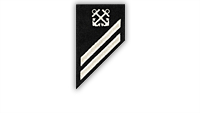 |
| E-1 Seaman Recruit (SR) | E-2 Seaman Apprentice (SA) |
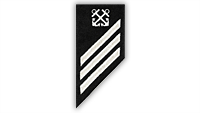 |  |
| E-3 Seaman (SN) | E-4 Petty Officer Third Class (PO3) |
 | 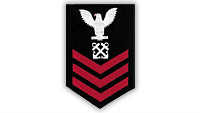 |
| E-5 Petty Officer Second Class (PO2) | E-6 Petty Officer First Class (PO1) |
 | 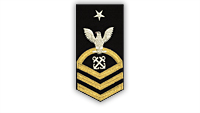 |
| E-7 Chief Petty Officer (CPO) | E-8 Senior Chief Petty Officer (SCPO) |
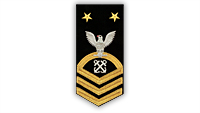 | 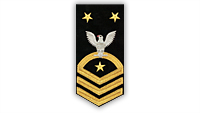 |
| E-9 Master Chief Petty Officer (MCPO) | E-9 Fleet/Command Master Chief Petty Officer |
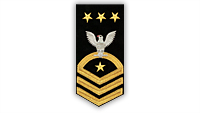 | |
| Special Master Chief Petty Officer of the Navy (MCPON) |
 |  |
| O-1 Ensign (ENS) | O-2 Lieutenant Junior Grade (LTJG) |
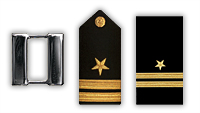 | 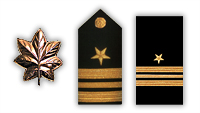 |
| O-3 Lieutenant (LT) | O-4 Lieutenant Commander (LCDR) |
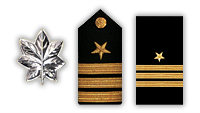 | 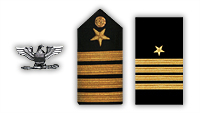 |
| O-5 Commander (CDR) | O-6 Captain (CAPT) |
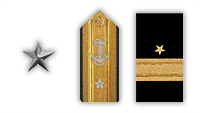 | 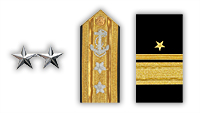 |
| O-7 Rear Admiral Lower Half (RADM LH) | O-8 Rear Admiral Upper Half (RADM UH) |
 | 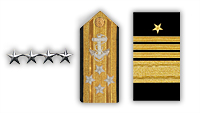 |
| O-9 Vice Admiral (VADM) | O-10 Admiral (ADM) |
 | |
| O-10 Special Fleet Admiral (reserved for wartime only) |
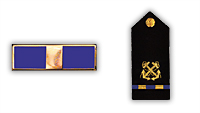 | 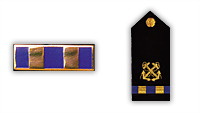 |
| W-1 Warrant Officer (Coast Guard Only) | W-2 Chief Warrant Officer 2 |
 |  |
| W-3 Chief Warrant Officer 3 | W-4 Chief Warrant Officer 4 |
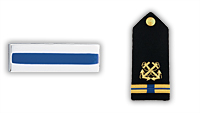 | |
| W-5 Chief Warrant Officer 5 |
Other Telling Features of the Uniform
Ribbons. Medals. Badges. Pins. Devices. Beyond rate and rank, there are also special insignia and other elements of the uniform that can reflect anything from your job specialty/qualifications to your professional community to your specific awards and decorations.
 America's Navy
America's Navy
